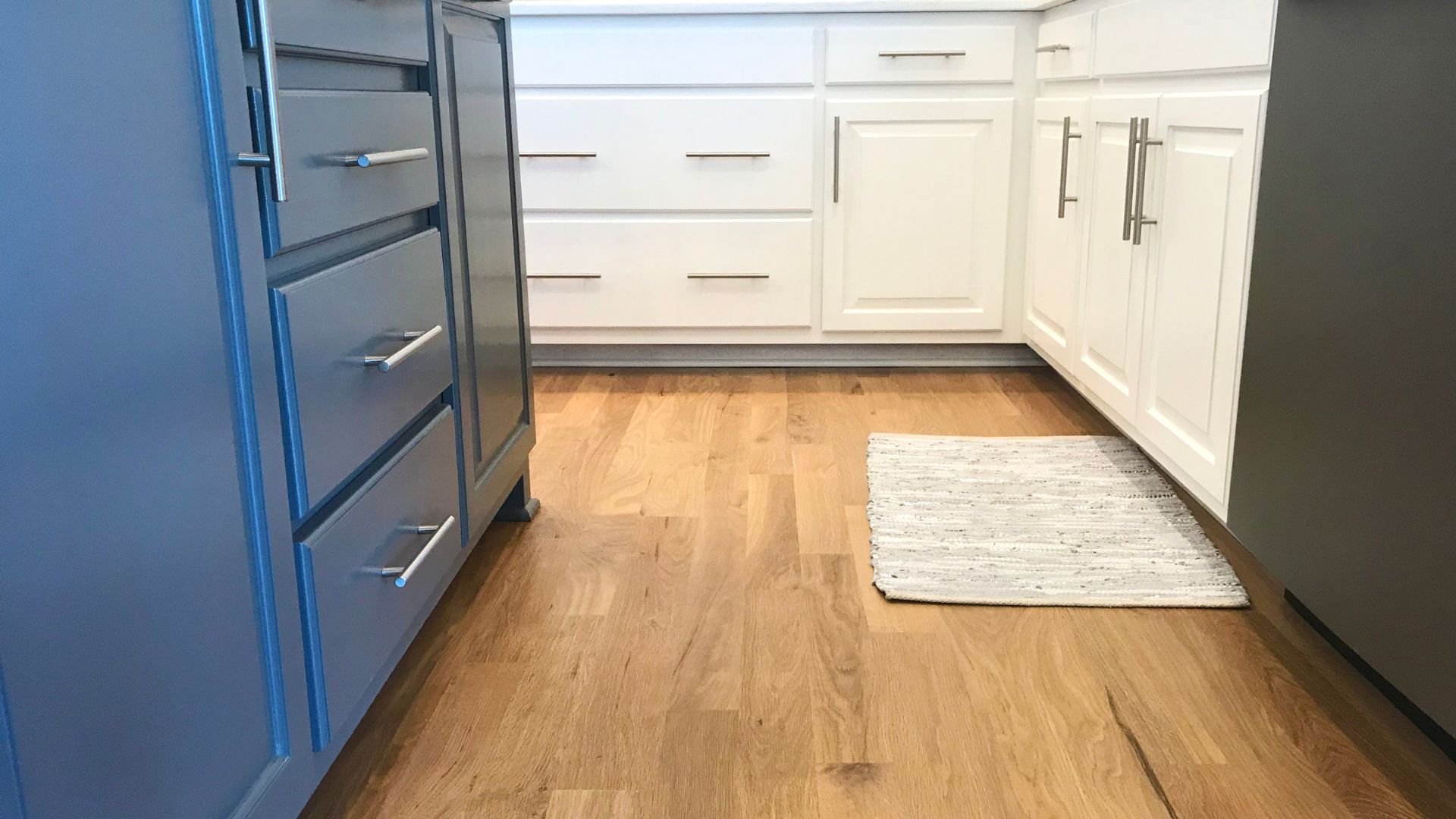
The Appeal of Dual-Tone Kitchens
Why opt for two colors when you can choose just one? The answer lies in the dynamic and balanced aesthetics that dual-tone kitchens offer. Using two hues allows you to define zones, highlight architectural details, and create a focal point in your kitchen. It’s a simple strategy that brings sophisticated visual impacts. But how do you start? Let’s dive in.
Choosing Your Primary Color
Selecting the primary color for your kitchen sets the tone of the room. This color typically covers the larger areas, like the majority of the cabinetry or the walls. Popular choices include neutral tones such as white, gray, or beige. These colors serve as a canvas, setting a backdrop that lets your secondary color shine.
Selecting a Complementary Secondary Color
Your secondary color adds depth and interest. It could be bold or subtle, depending on the look you’re aiming for. This color often appears on lower cabinets, an accent wall, or as backing in open shelving. Consider colors that either contrast strongly with or complement your primary color harmoniously.
Best Practices for Painting Kitchen Cabinets
- Surface Preparation: Ensure cabinets are clean, sanded, and free of old paint.
- Primer Use: Apply a primer to help the topcoat adhere better and last longer.
- Quality Paints: Opt for high-quality paints that withstand kitchen environments.
Incorporating Colors Strategically
The key to a successful dual-tone kitchen is balance. Use your secondary color in ways that draw the eye but don’t overwhelm. For example, if you have an island, consider painting it your secondary color to make it the room’s focal point.
Lighting and Color Perception
Lighting plays a crucial role in how colors are perceived. Natural light shows the truest color, while artificial lighting can alter it. Consider the light sources in your kitchen when choosing your colors to ensure they look as intended throughout the day.
Textural Elements Add Depth
Beyond color, texture brings depth and interest to your kitchen. Think matte finishes on cabinets with glossy tiles or backsplashes. This interplay of textures can enhance the visual impact of your dual-tone color scheme.
Durability Matters in Kitchen Paint
In a kitchen, durability is as important as appearance. Choose paints that can handle humidity, temperature changes, and cleaning. Semi-gloss or high-gloss finishes are ideal for areas exposed to moisture and grease.
Why Professional Kitchen Painters Matter
For a flawless finish, consider hiring professional kitchen painters. In Temecula, our team at Wall Works (phone number 951-695-5588) specializes in kitchen renovations. Our experts ensure smooth, durable, and precise color application, turning your vision into reality.
The Role of Accent Colors
Don’t forget about smaller elements like hardware and accessories. These can be used to introduce an accent color that complements or contrasts with your primary and secondary colors, adding layers of visual interest.
Sustainable Painting Practices
At Wall Works, we prioritize sustainability. We use eco-friendly paints and processes to minimize environmental impact. Choosing the right painters means supporting practices that care for our planet.
Conclusion: The Impact of Thoughtfully Chosen Colors
A dual-tone kitchen isn’t just about following a trend—it’s about creating a space that feels uniquely yours. By thoughtfully selecting and applying two harmonious paint colors, you can transform your kitchen into a place of beauty and comfort.
FAQs
- What are the most popular kitchen paint colors for 2023?
Neutral tones like whites and grays continue to dominate, but there’s a growing interest in incorporating bold colors like navy blue and forest green.
- How do I maintain my newly painted kitchen cabinets?
Regular cleaning with mild soap and water, avoiding harsh chemicals, and touching up chips quickly will keep your cabinets looking fresh.
- What should I consider when choosing colors for a small kitchen?
Opt for lighter colors as your primary tone to make the space feel larger, using darker or bolder colors in small doses.
- Can I paint my kitchen cabinets without sanding them first?
Sanding is recommended for the best adhesion of primer and paint, although some products are designed to work without sanding.
- How long does it take to paint a kitchen?
The timeline can vary based on the size of the kitchen and the extent of prep work required, but typically, it takes a few days to complete.
Ready to transform your kitchen with stunning dual-tone colors? Contact Wall Works at 951-695-5588 to discuss your vision. We specialize in kitchen painting and offer free estimates to help get you started on your dream kitchen makeover. Let us help you make your kitchen the heart of your home!

